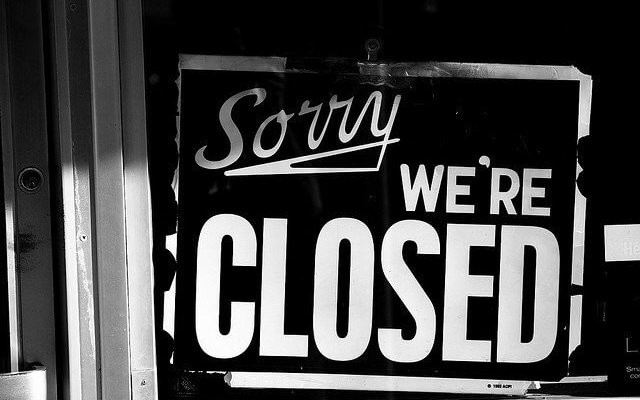Hurricanes. Floods. Data breaches. Employee malevolence. Staff violence. Financial problems. The list of potential crises that can strike small businesses or nonprofits are many, and real. But you don’t have to be left in a panic when disaster hits. Below are six things business owners can do to minimize damage and communicate with important audiences the minute a catastrophe hits, along with a proactive suggestion to be uber prepared for any event.
1. Pin your message to your Facebook wall
Seems too simple, right? Yep, but effective. Pinning your message to the top of your Facebook wall keeps it front and center for all to see. In an emergency situation, people need information and they need it now, so give it to them. Is your business going to be closed? Say that, then pin that. Maybe your location is the only one of its kind open. Say it, pin it.
Proactive approach: Have a comprehensive social media plan in place before crisis hits. Facebook and Twitter can be lifesavers, allowing you to reach your customers and clients quickly and effectively. These channels also let you continually communicate with stakeholders before, during and after an emergency. If your business has a social media crisis communication plan in place, when panic strikes you and your employees will feel organized and ready to put that plan in action.
2. Designate one person to post on social media
Pick one person, preferably someone who is skilled and understands social media, to be the point person for all posts on all channels. This person should have the authority to speak for the company and should have a documented process on how to respond on behalf of the company. Make clear in this process whom she or he will go to for approval of messages if necessary. They’ll know what they posted so communications aren’t redundant and don’t give conflicting information. They’ll also keep the tone of the messages consistent. An employee going rogue on your business’ social media account has the potential to create another negative situation all on its own. Shut that down before it starts.
Proactive approach: Social media sites like Twitter give real-time information and have proven to be an effective tool in crises. The fast-paced speed of Twitter allows for constant contact with customers and clients. No matter the situation, a well-constructed message is key. Good crisis communication plans include “what if” planning. Sit down with your staff and think about the kinds of negative events that could impact your business. Once you have a list, think about what your message to the public would be for each one. Could a data hack hit your business? What would your main message be if it did? Having these messages crafted can save time and stress.
3. Refer to your state requirements/regulations
States have protocols in place for when disaster strikes, and regulations that need to be followed. Refer to them in times of crisis to make sure your business doesn’t get itself in hot water while the water is already hot. Make sure your business has necessary procedures in place for worker’s compensation issues, policy violations, and medical issues. Matt Blaine, an associate in Davison, Eastman & Muñoz’s business law and litigation department, suggests business owners revisit paid time off, sick time, and leave policies for compliancy with applicable laws and regulations.
Proactive approach: Blaine recommends consulting with an attorney when developing and implementing these policies. He also advises business owners to consider the type of insurance their business needs, the levels of coverage and whether any endorsements are necessary. “Although your business may have a workers’ compensation insurance policy and a commercial general liability policy, does it have directors and officers insurance, errors and omissions insurance, business interruption insurance or insurance that would cover the many ramifications that can result from a cybersecurity data breach? These questions should be evaluated internally by your business, researched independently and addressed collaboratively with a trusted insurance professional,” Blaine said.
4. Create an employee social media policy beforehand
It’s important to have a social media policy in place for employees, regardless of whether there’s an emergency or not. A good social media policy outlines them, whether the employee is acting on company social or a personal account. Rebecca Carvalho, an associate in Davison, Eastman & Muñoz’s criminal and regulatory defense and municipal law departments, suggests creating a policy that fits your business, keeping an eye out for how that policy will work in both good times and bad.
“The saying that you can’t un-ring a bell rings true when your business is in a crisis,” Carvalho said. “If you haven’t had or enforced a media policy, and you let your employees post whatever and whenever, it will be hard, if not impossible, to turn on a dime and enact and/or enforce a media policy,” she said.
Proactive approach: Create a policy now to mitigate risk for both you the employer and your employees. Check out these examples of organizations with great social media policies from HireRabbit.com.
5. Tweet, retweet, tweet again
Twitter moves fast, and even faster during a disaster. Information can be pushed off the screen in a matter of seconds. Twitter isn’t like Facebook, where things stay visible for an extended period of time. Tweeting the same message a few hours apart won’t irritate readers, it will keep them informed.
Proactive approach: Is your business on Twitter? No? Get on it now. Once you’re on, build up your audience. Start by following people you do business with, your customers, local media, and anyone else you think fits the bill. Follow people who follow you is standard practice. As a business you’ll want to check out a follower’s profile and follow when appropriate. Once you start posting regularly on Twitter you’ll gain followers interested in your content. If you build up a hefty audience and are continually active on the platform, once a crisis strikes they will turn to your Twitter account for the latest information, making it the easiest and fastest way to communicate vital info.
6. Ask for help
It’s easy for a business to drown in a disaster without proper management. You can reduce the impact of a negative event by partnering with a professional communication agency These experts can help your business develop a strategic communication plan for any event. These plans will identify stakeholders, set goals, objectives and strategies for the business, and outline specific tactics to help minimize the damage from a negative situation. Berenstein Crisis Management, a large public relations firm specializing in guiding businesses through emergencies, suggests preparing and planning is the best way to soften the damage caused by negative events. In fact, the firm suggests failing to plan for these events creates a situation of its own. Follow them on Twitter @berensteincrisis, and gets tips from their blog.
Proactive approach: Be sure to include your marketing team in discussions of crisis plans. They should be integral to any plan and part of its development. Ask your current PR or social media manager for any plans and procedures they have for responding and find out how they have helped other businesses during bad difficult circumstances. Together you can draft a plan for how to respond on social media during troubled times.
Preparation can minimize the damage done during an emergency situation and make it easier to recover after it’s over. Every business is at some risk of being affected by a disaster, so being prepared is crucial.
Marketing Rival’s Stephanie Eichmeyer cut her teeth on crisis pr while on the public relations staff at a hospital in St. Louis. She will present a free seminar on the topic tomorrow in Asbury Park. “The Role of Crisis PR in your Small Business,” will explore the proactive steps a small business owner can take to prepare for a disaster. She’ll also talk specifically about Hurricane Sandy and the relief money that is still available for businesses and nonprofits.
Photo by Tommaso Galli




Leave a Reply